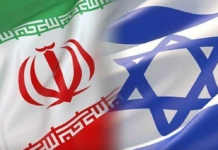Spatial design practices in Pakistan are characterized by political entanglements, interdepartmental tugs, lack of governmental funding, litigation and paucity of mass trust in economic viability. Every now and then cities and dwellings for months and years wait and wail in silence, to condole the demise of all-around cohesiveness in planning, which in fact and effect was never borne. Urban design and development in third-world countries like ours have been a rushed outcome of people migrating from rural to urban areas in search of better living opportunities. Isn’t it a common sight to see a road recently carpeted by the municipality and being dug out the very next week by electric and gas-supplying companies? Are not encroachments, temporary or permanent, an order of the day? Isn’t the urban sprawl a jungle of concrete with green areas being swallowed by settlements? Phenomena like these are an everyday happening and they pose serious questions to our urban planners and designers. The mayhem is, therefore, likely to increase manifold if we do not take all on board to create a dialogue. It shall remain an unabated strand of development ending up in facades of buildings and towns and not habitats or places. This write-up aims at highlighting the importance of dialogue to design.
The Almighty emphasizes design; the art of possibility, in Holy Quran stating that “We created the man in the best design” (Attien, Chapter 95, Verse 4). The concept of design has been amply highlighted in Bible too, when the Almighty instructs the construction of the tabernacle (place of worship) in line with the verse stating “See that you make them after the pattern for them, which was shown to you on the mountain” (Exodus. Chapter25, Verse 40). The preamble to these above-quoted divine commandments embeds an important phrase “the art of possible”. It is yet another key concept in design. This divine emphasis on design seeps into human minds too. The famous, Austrian-born designer Victor Jose Papanek (1923-1998) said “Design is the conscious and intuitive effort to impose meaning full order” This meaning of full order brings to fore the self-worth of the designer which helps self -discovery and the urge to experiment. It won’t be an exaggeration to state that innately, the design we all do, akin to management mantra, that we all manage.
Urban design is an intricate web of social equity, economic viability and environmental impact. It is based on the likes of landscaping, engineering, architectural design, development economics and transportation policy. There are different themes to an urban design which can be classified mainly into extent or scope; can be tangible or intangible both, then is the scale which assigns some measures to the scope. The third is the attention it gets from the potential user (consumer), It can be measured in terms of the interest it generates in the public, which may be termed as relevance of urban design. We must remain cognizant that urban design transcends from the private to the public sphere. Last but not least is the process itself; in line with certain rules implementation of which is monitored and controlled by some authority. This thematic dispensation in fact provides us with a binocular through which urban design can be viewed. The technical lens i.e. tangible scope, scale and governance, provides for bounds of space, materials and execution, whereas the social lens provides us with a view through the intangible scope and attention/interest of the public or its relevance per se.
To kick-start a dialogue we need to identify the stakeholders to be engaged. Common sense concludes that governments, local governments, developers, engineers, architects and financiers are the key entities in this regard. A key stakeholder which must not go amiss, is the users, ultimate beneficiaries and shall remain centric to any urban design.
What necessitates a dialogue? Through dialogue what can we obviate? The answer lies in identifying certain factors. The foremost is the trend of compartmentalization. An effect, under which the stakeholders appended above think, plan, conceptualize, design and execute remains confined to their own mindsets, information, knowledge and experiences. Imagine a graphical illustration of compartments isolated from each other through a vacuum. Then is the failure of the public sector in understanding its role to impart quality to the design through effective planning for procurement of men and materials and arranging the requisite investment. The development remains constrained owing to myopic, short-term planning and is likely to be supply driven, focusing more on the ritual, than the spirit itself. This is likely to result in outputs and outcomes which are at a tangent to being multipurpose. Ultimately innovation takes a hit and sustainability is enlisted among causalities. Communication holds the key to a design process. Sharing of ideas, elaboration of design concepts and information, all are important to be communicated, ideally up and down, to and fro.
And what does dialogue bring to a design? It adds value for we may say a user, or a consumer, a dweller or an intended dweller. A well-moderated and orchestrated dialogue shall help show the purpose to all the actors and stakeholders. The design itself starts communicating with the user. It strikes an equation, to say the least. Gives an overall cohesiveness to the design and development process. It helps plan long-term, projecting into the future. Dialogue thus can bring in inputs which can be transformed into quality outputs and thus outcomes. A platform to this effect has been formulated by an architect and an urban development practitioner, aiming to support a group of professionals, experts, architects, and engineers and openly inviting thinking and analytic minds from civil society to unleash a dialogue on urban design keeping in view its technical and social aspects, both. The think tank can be reached at [email protected]. Let us join hands and minds to make a difference.





